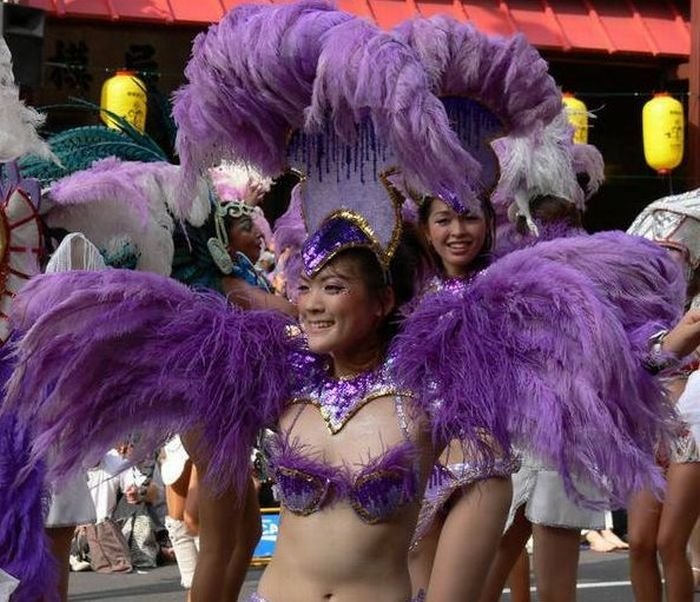Samba Carnival, Japan
|
"Pelo Telefone" was the first composition to achieve great success with the style of samba and to contribute to the dissemination and popularization of the genre. From that moment, samba started to spread across the country, initially associated with Carnival and then developing its own place in the music market. There were many composers such as Heitor dos Prazeres, João da Bahiana, Pixinguinha and Sinhô, but the sambas of these composers were "amaxixados" (a mix of maxixe), known as sambas-maxixes.
The contours of the modern samba came only at the end of the 1920s, from the innovations of a group of composers of carnival blocks in the neighborhoods of Estácio de Sá and Osvaldo Cruz, and the hills of Mangueira, Salgueiro and São Carlos. Since then, there have been many great names in samba, such as Ismael Silva, Cartola, Ary Barroso, Noel Rosa, Ataulfo Alves, Wilson Batista, Geraldo Pereira, Zé Kéti, Candeia, Ciro Monteiro, Nelson Cavaquinho, Elton Medeiros, Paulinho da Viola, Martinho da Vila, and many others.
As the samba consolidated as an urban and modern expression, it began to be played on radio stations, spreading across the hills and neighborhoods to the affluent southern areas of Rio de Janeiro. Initially viewed with prejudice and discriminated against because of its black roots, the samba, because of its hypnotic rhythms and melodic intonations, as well as its playful lyrics, eventually conquered the white middle class as well. Derived from samba, other musical genres earned themselves names such as samba-canção, partido alto, samba-enredo, samba de gafieira, samba de breque, bossa nova, samba-rock, pagode, and many others. In 2007, the IPHAN turned the into a Samba a Cultural Heritage of Brazil.
The samba is frequently associated abroad with the football and Carnival. This history began with the international success of "Aquarela do Brasil," by Ary Barroso, followed with Carmen Miranda (supported by Getúlio Vargas government and the US Good Neighbor policy), which led to the samba United States, went further by bossa nova, which finally entered the country in the world of music. The success of the samba in Europe and Japan only confirms its ability to win fans, regardless of language. Currently, there are hundreds of samba schools held on European soil (scattered by countries like Germany, Belgium, Netherlands, France, Sweden, Switzerland). Already in Japan, the records invest heavily in the launch of former Sambistas set of discs, which eventually create a market comprised solely of catalogs of Japanese record labels.
|
|









